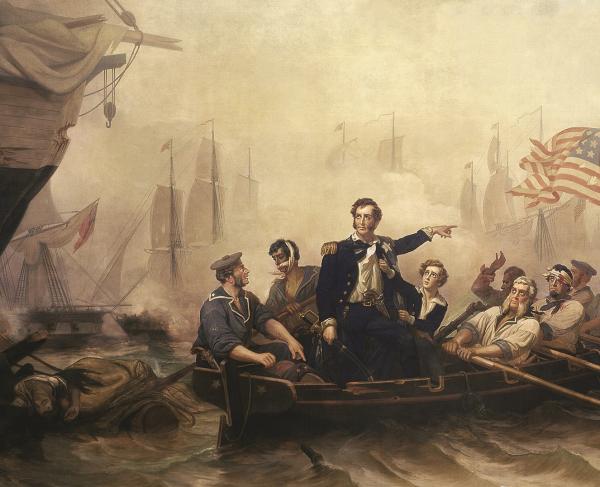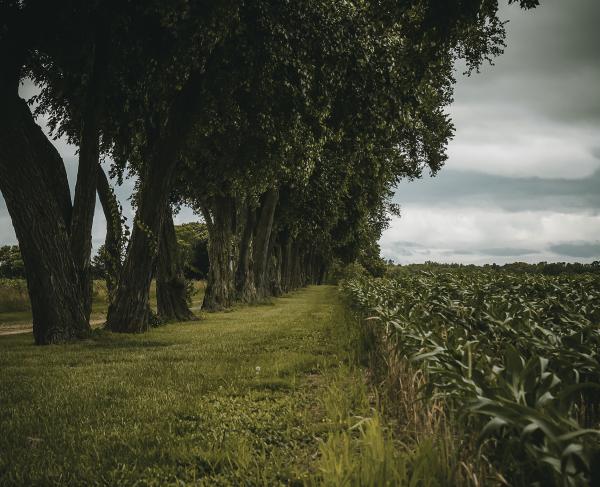Baltimore during the War of 1812
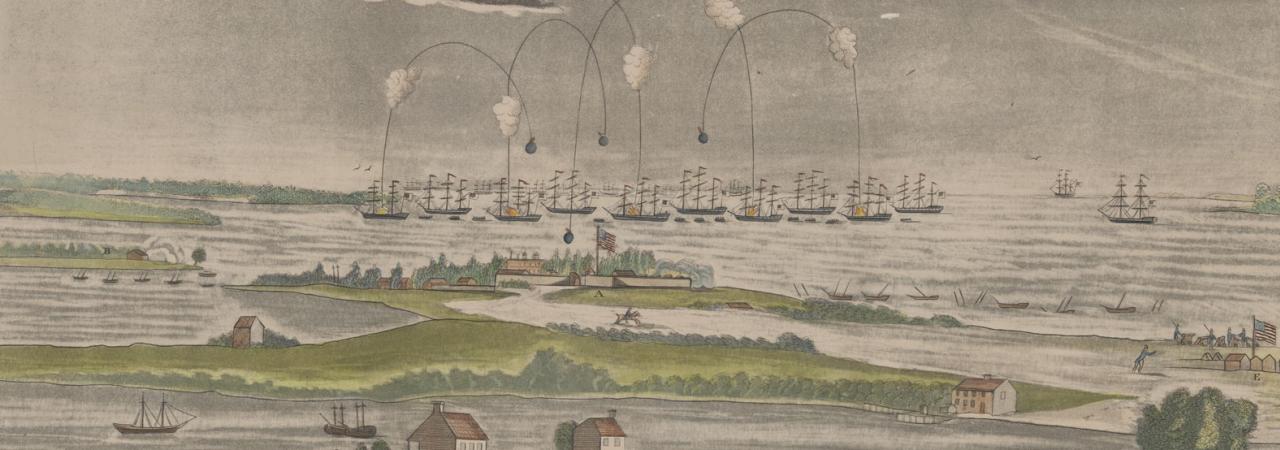
"A View of the Bombardment of Fort McHenry" shows the British fleet bombarding Fort McHenry during the War of 1812.
By 1812, the port city of Baltimore had solidified its place in the young United States as a burgeoning economic metropolis. Although it was founded in 1729, markedly later than its peripheral east coast cities, Baltimore with its 47,000 residents was by 1812 the third-largest city in America. Recently emigrated Europeans, a majority being Irish, German, and French refugees escaping British rule in Nova Scotia and increasingly hostile conditions in Haiti made up much of Baltimore’s booming population.
To these immigrants, Baltimore offered an attractive and ideal livelihood full of economic promise. Indeed, Baltimore’s location on the Patapsco River with easy access to the Chesapeake Bay and the Atlantic, and with a well-protected, deep harbor, enjoyed economic prosperity through its maritime activities--trade, shipbuilding, and privateering. Although Baltimore became a chief exporter of grain on the east coast and built warships such as the frigate the U.S.S. Constellation, the city was best known for the vast privateering network of militarized private sailors to which it provided haven.
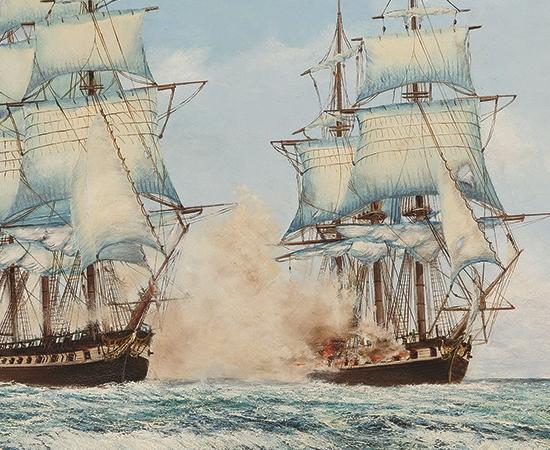
At the onset of the War of 1812, the United States Navy found itself desperately outnumbered and outclassed by the naval power with which it was now at arms. To oppose this seemingly unbeatable foe, the United States turned to the many merchants and private sailors inhabiting its ports, issuing licenses, or letters-of-marque, to those who wished to make a profit from capturing enemy vessels. These now-militarized traders and sailors that sailed with the express aim of harassing and commandeering enemy trading vessels, found immense success in their pirating, inflicting heavy tolls on British shipping, capturing an estimated 1,200 vessels. Nowhere along the East Coast was privateering more rampant and encouraged than in the port city of Baltimore. The privateers using Baltimore as their home port not only obtained vast wealth from their work, (strengthening the city’s economy in the process), but were responsible for as much as one-third of all captured British vessels during the war. The 122 American privateering vessels, which made up Baltimore’s fleet, would cause some 16 million dollars of damage to the British in accumulated privateering during the war. This pervasive privateering earned Baltimore an infamous and hated reputation among the British as a “nest of pirates” and would be a large factor in their later targeting of the city during the Chesapeake Campaign in 1814.
Contributing to the ardor displayed by the people of Baltimore in hoisting the sail against the British were the strong anti-British, pro-war sentiments harbored by the majority Democratic-Republican populace. Unlike many of the other large cities in the north-east, such as New York or Philadelphia, the population of Baltimore was firmly on the side of the pro-war, Democratic-Republicans. With its large immigrant population, many of whom had emigrated to escape British rule, feelings of resentment towards the British ran high.
Like many cities across the country after the declaration of war on June 18, 1812, the rift in Baltimore between the anti-war Federalists and the pro-war Republicans was deepening. As Baltimore-based Federalist newspapers such as the Federal Republican denounced the declaration of war as tyrannical, “unnecessary,” “inexpedient,” with “marks of undisguised foreign influence,” the pro-war mobs of Baltimore began to demand accountability for such seemingly treasonous speech. Through the summer of 1812 crowds gathered outside of the Federalist Republican’s printing office, tearing down the façade of the building and threatening to break in. As the summer progressed and the Federalist Republicans refused to halt their anti-war writings, angry mobs gathered once again. Those printing the newspaper, after having been moved to the jailhouse for protection, were then promptly carried out and beaten by the mob, many to the point of near-death. Among those savagely beaten were the paper’s editor Alexander Hanson, as well as Revolutionary War hero Henry Lee, who had been meeting with the paper to arrange the printing of his memoirs. As word of the "cruelty and barbarity” of the Baltimore riots spread, the city quickly gained the title of the “Paris of America” for the reign of terror its despotic mobs had created.
Before long, however, Baltimore’s citizens would have to come together to protect the city from utter destruction by the British. Unlike the still-developing U.S. capital, Washington D.C., Baltimore was recognized as a primary target for the British if they were to attempt to go up the Chesapeake. More than a year before any British soldiers landed in Maryland, Governor Levin Winder had ordered Maj. Gen. Samuel Smith of the Maryland Militia to prepare the city's defenses. In addition to fortifying the harbor with chains, sunken hulls, and more powerful guns at Fort McHenry, Smith oversaw the citizens of Baltimore construction of a two and a half mile redoubt named Hampstead Hill bristling with 100 cannons guarding the eastern approach to the city. As city volunteers raised money for projects and worked to fortify the city, the local militia of 10,000 to 15,000 men drilled for battle regularly ensuring that failures of discipline, which had plagued operations in the Northern theatres earlier in the war, would not occur again.
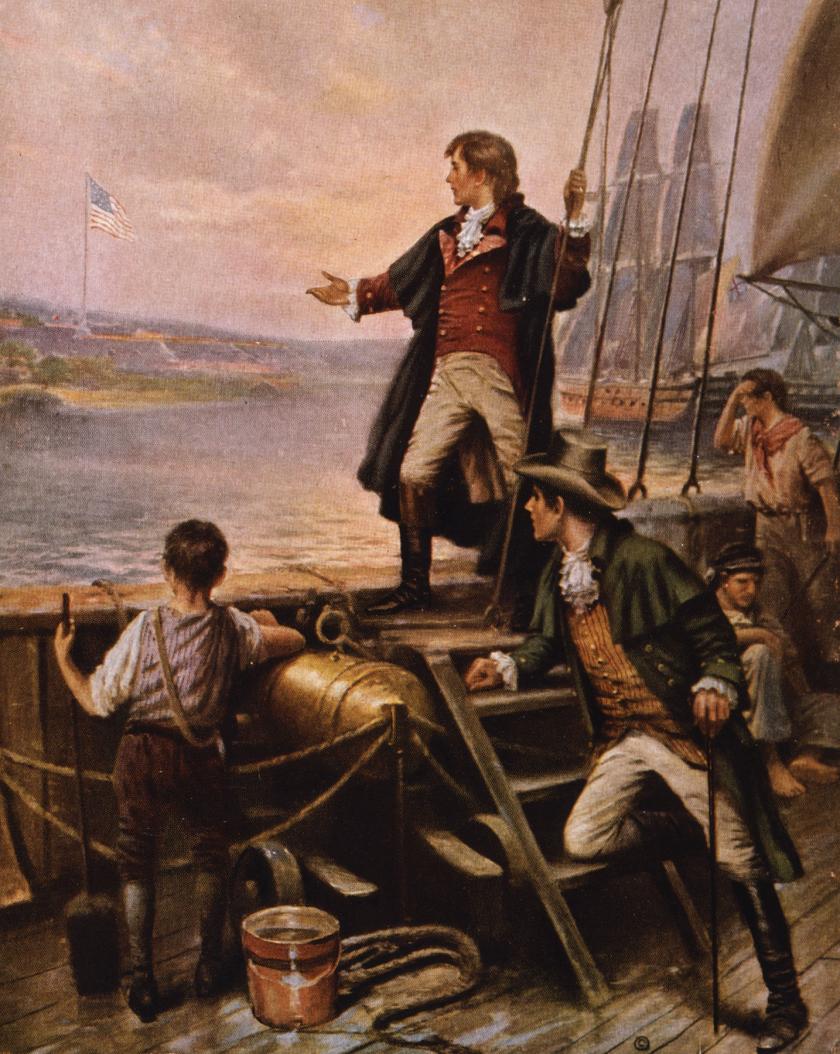
After the mass rout of U.S. forces at Bladensburg and the burning of Washington on August 24, 1814, by British Maj. Gen. Robert Ross, Baltimore was poised to be the next British target. Ross, then promptly turned his expeditionary force northward as expected. Encapsulating such desires to target Baltimore, one British naval officer commented, “I do not like to contemplate scenes of blood and destruction but my heart is deeply interested in the coercion of these Baltimore heroes, who are perhaps the most inveterate against us of all the Yankees.”
The Battle of Baltimore, fought September 12-14, 1814, saw the tenacious defense of Baltimore by its residents. At the Battle of North Point, five miles east of Baltimore, 3,200 Maryland militiamen under the command of militia general John Stricker showed their discipline in battle, inflicting heavy casualties on the 4,500-man British army, killing Ross. At Fort McHenry the next day, the defenders under the command of U.S. Army Maj. George Armistead held out against a 25-hour bombardment by the British fleet. As the lawyer Francis Scott Key immortalized in his poem the “Star-Spangled Banner,” Baltimore, despite its turmoil earlier in the war, left an indelible and triumphant mark on the course of the war, securing the epithet “home of the brave,” refusing to yield to the British forces and allow their destruction to continue farther north.
Further Reading:
- The War of 1812: A Forgotten Conflict By: Donald R. Hickey
- The War of 1812: Conflict for a Continent By: J. C. A. Stagg
- 1812: The War of 1812 By: Walter R. Borneman
Related Battles
200
250
